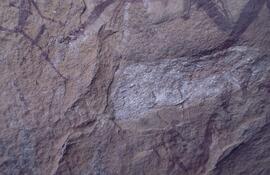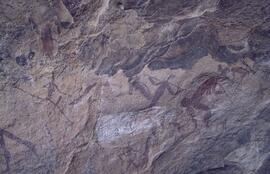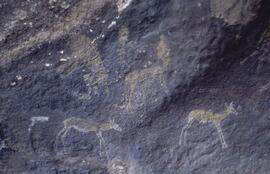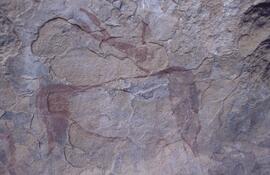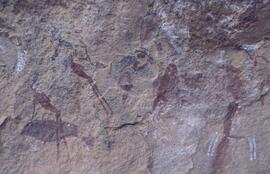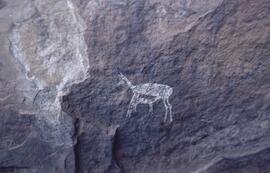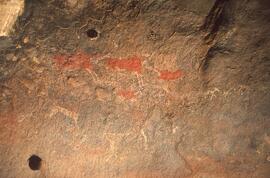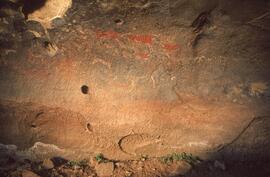36 results with digital objects
Show results with digital objects
ZA NASMUS NASMUS-NASMUS-RSA-LEL4-8.jpg
·
Item
·
27/04/2002
Part of National Museum
Depictions of felines in rock art are common.
Lions in general were believed to have some of the shaman’s accomplishments: they knew things that ordinary people could not possibly know, they could become invisible, and they could cause things to happen by supernatural means. They could also transform themselves into hartebeest and then, when the hunters appeared, revert to their feline form.
Not surprisingly, Bushmen believe shamans can turn themselves into lions. It was also believed that shamans obtained lion-power by eating a lion’s gall, which is believed to be the seat of its potency. When malevolent shamans roam in feline form, the shamans in the camp enter trance and chase them off. Lelie Kloof IV
